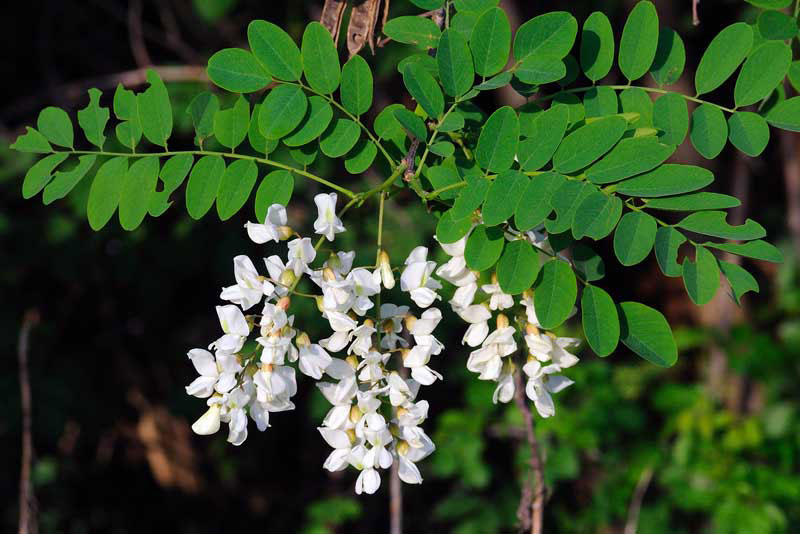Black Locust (Robinia pseudoacacia)
A neat, deciduous tree normally up to 12 metres tall but in ideal conditions may reach 25 metres. Bark is dark brown and deeply furrowed. It suckers freely to create impenetrable thickets where the young stems and branchlets have nasty thorns. The small, bright green leaves become yellow in autumn. From September to November the trees are covered in white, fragrant flowers in drooping sprays followed by reddish-brown pods. The seeds, leaves and inner bark are poisonous.
